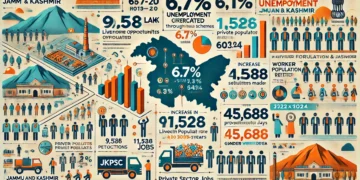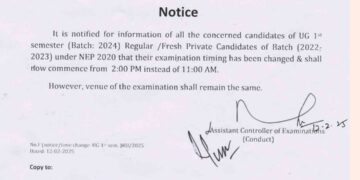Mumbai, October 9. The Reserve Bank said on Wednesday that the UPI Lite wallet limit will be increased to Rs 5,000 and the per-transaction limit to Rs 1,000 in order to encourage more people to use the popular instant payment system via mobile phones.
A restriction of Rs 500 per transaction and an overall limit of Rs 2,000 per UPI Lite wallet is currently in effect, with the option of auto-replenishment.
Reserve Bank Governor Shaktikanta Das, who unveiled the October bi-monthly monetary policy, also announced that the per-transaction limit in UPI123Pay will be increased to Rs 10,000 from Rs 5,000.UPI123 was launched in March 2022 to allow feature phone users to use UPI.
This capability is now available in 12 different languages. Das also announced the introduction of a beneficiary account name look-up feature for the Real Time Gross Settlement System (RTGS) and National Electronic Funds Transfer (NEFT) systems, which will benefit customers.
Payment systems such as UPI and IMPS allow the remitter to verify the name of the recipient (beneficiary) before beginning a payment transaction.
The Governor stated that there have been requests to create such a provision for RTGS and NEFT systems.As a result, it is now suggested to introduce a ‘beneficiary account name look-up tool’ to allow RTGS and NEFT remitters to check the name of the beneficiary account holder before beginning a cash transfer,” he explained.
Remitters can enter the beneficiary’s account number and branch IFSC code, and their name will be displayed. This feature will boost client confidence by reducing the potential of incorrect credit and fraud, according to Das.
The Central Bank will also establish the ‘Reserve Bank Climate Risk Information System (RB-CRIS)’, with climate change emerging as a key risk to the financial system.Das stated that regulated firms must do climate risk assessments to ensure the stability of their balance sheets and the financial system.
He stated that such an assessment needed, among other things, high-quality data on local climatic scenarios, climate projections, and emissions.
The existing climate-related data contains numerous gaps, including fragmented and diverse sources, as well as varying forms, frequencies, and units.
Das stated that the Reserve Bank recommends creating a data repository called RB-CRIS, which will be divided into two components.
The first section will be a web-based directory of various data sources (meteorological, geographical, etc.) that will be publically available on the RBI website.
The second component will be a dataset gateway (processed data in defined forms). Access to this data portal will be limited to regulated companies in a staggered way.(PTI)










































